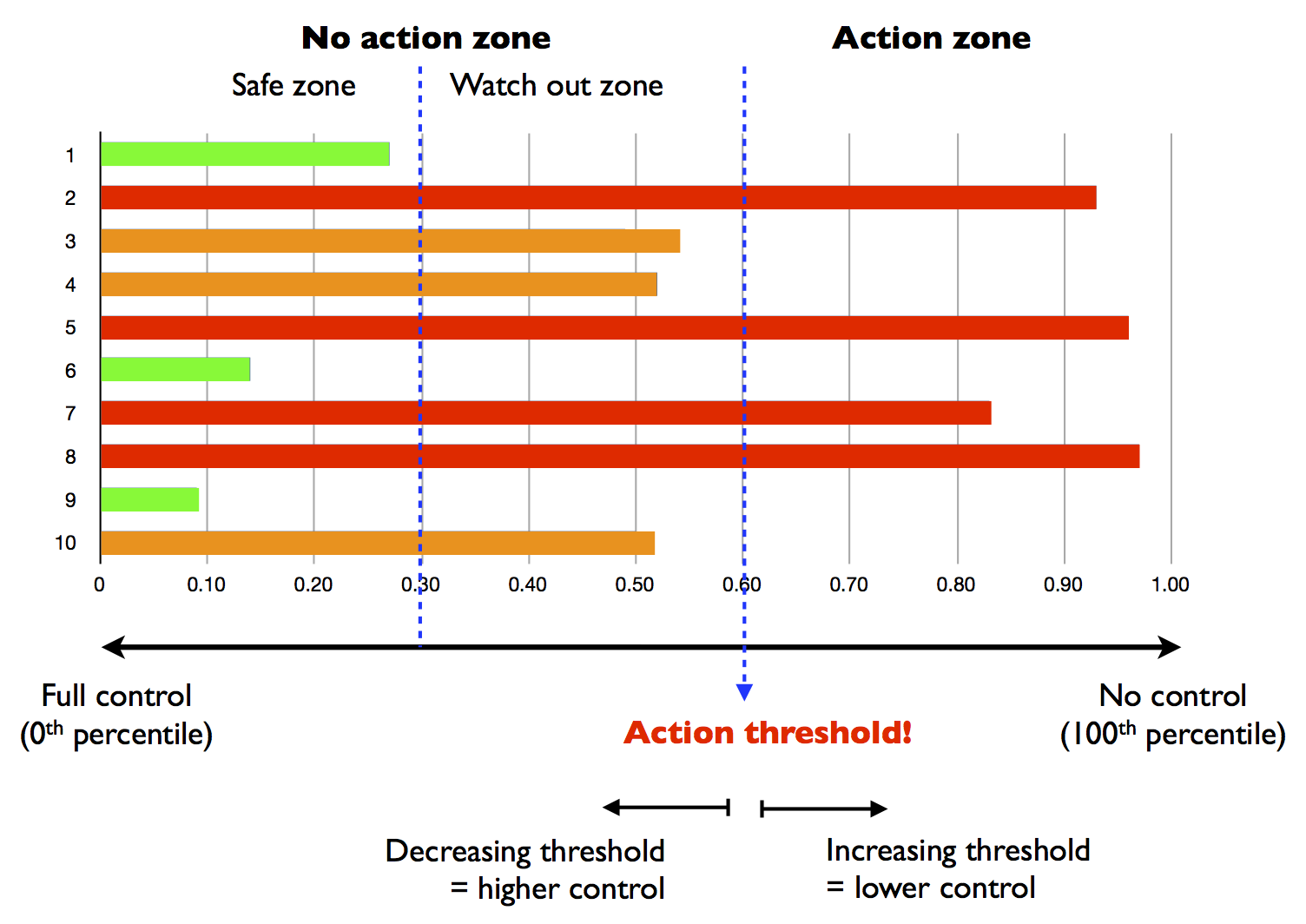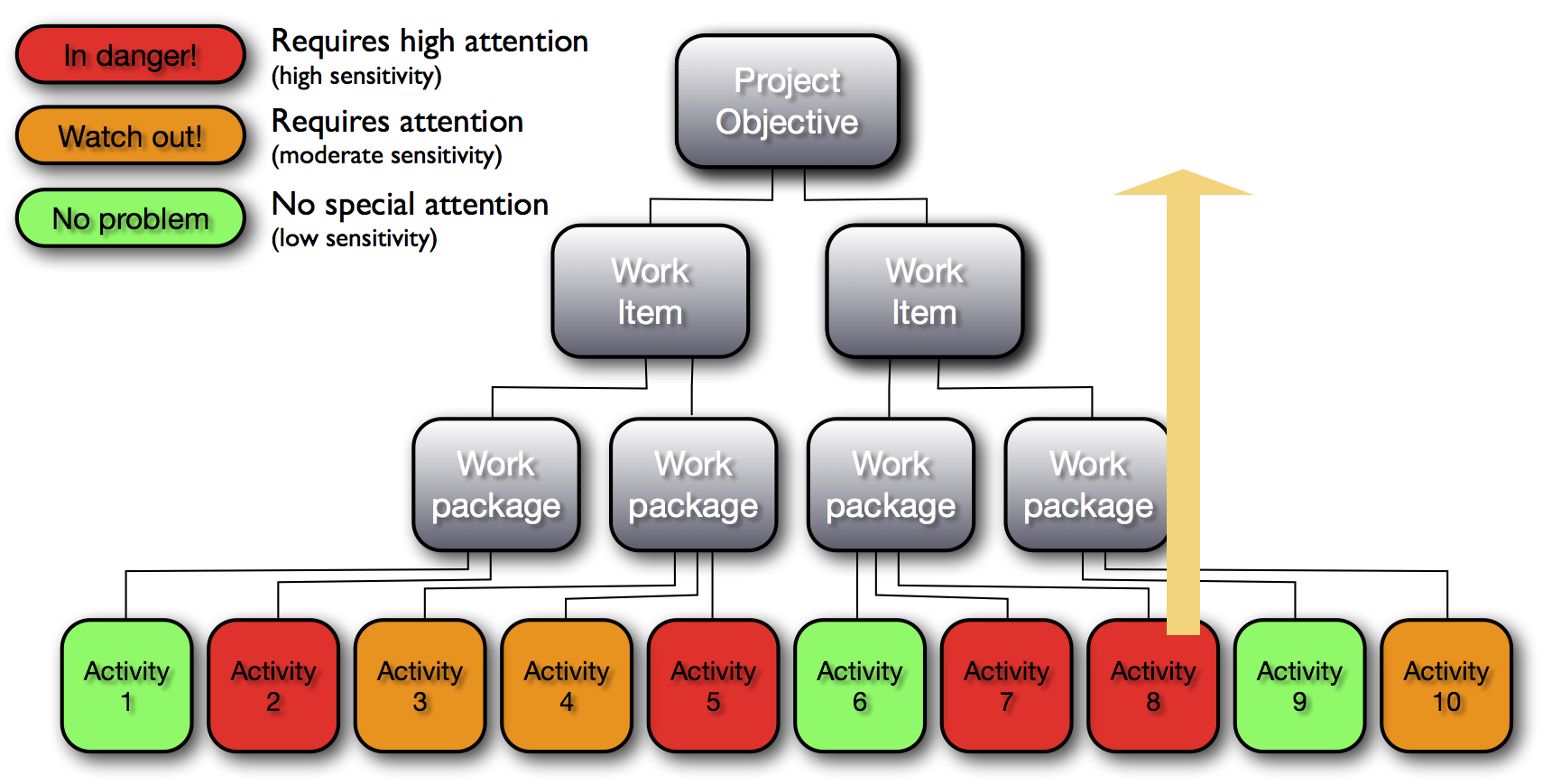Bottom-up project control: Setting action thresholds using schedule risk analysis
Submitted by Mario Vanhoucke on Fri, 12/30/2011 - 15:34


The interest in the sensitivity of project activities from both academics and practitioners lies in the need to focus a project manager’s attention on those activities that influence the (time and cost) performance of the project. When management has a certain indication of the potential impact of the various activities on the project objective, a better management focus and a more accurate response during project control should positively contribute to the overall performance of the project.
Schedule Risk Analysis (SRA) is a simple yet effective technique to connect the risk information of project activities to the baseline schedule, in order to provide sensitivity information of individual project activities to assess the potential impact of uncertainty on the final project duration and cost. A traditional schedule risk analysis requires four steps, as described in “Schedule Risk Analysis: How to measure your baseline schedule’s sensitivity?”, to report activity sensitivity measures that evaluate each activity’s time and cost estimate on a scale of risk.
These sensitivity measures can be used by the project manager to distinguish between risky and non-risky activities in order to focus on those activities that might have an impact on the overall project objective during the project progress. In this article, the following three topics will be briefly explained:
- Sensitivity measures: Risk classification for project activities
- Action threshold(s): Interpretation of the measures to restrict a project manager’s focus
- Bottom-up project control: A project control approach
Sensitivity measures
The output of a schedule risk analysis is a set of measures that define a degree of activity criticality and sensitivity. The values of the activity sensitivity measures give an indication of the potential impact of changes in the baseline activity durations and costs on the overall project objective (project duration or total cost). The values for the sensitivity measures for each activity need to be interpreted by the project manager such that they can be used to distinguish between risky and non-risky activities and to set action thresholds that act as a mechanism to take corrective actions in case the project in progress runs into trouble. Well known sensitivity measures used in a schedule risk analysis are the criticality index, the significance index, the schedule sensitivity index and the cruciality index, which are discussed in “Schedule Risk Analysis: Measuring the time sensitivity of an activity”. In the remainder of this article, a fictitious sensitivity measure is used that expresses the sensitivity of each activity on a scale between 0% (insensitive) to 100% (highly sensitive).
Setting action thresholds
Action thresholds should be set by the project manager using the activity sensitivity information in order to put his/her focus on the most risky activities of the project. A predefined action threshold defines the intensity of control measured by the portion of project activities that require high attention. Consequently, knowledge of activity sensitivity information is crucial to steer a project manager’s attention towards a subset of the project activities that have a high expected impact on the overall project performance and objectives (time and cost). These highly sensitive activities are subject to more intensive control, while other less sensitive activities require less or no attention during project progress. In the illustrative figure 1, the set of activities is split into three classes, based on the values of the sensitivity measures obtained from a schedule risk analysis (the horizontal bars), as follows:
- If “sensitivity measure < 30%” then “safe zone”: These activities are considered to be insensitive to the project objective and hence they do not require special attention from the project manager once the project is in progress.
- If “30% ≤ sensitivity measure < 60%” then “watch out zone”: These activities are considered to have a low to moderate potential impact on the project objective. They do not require special actions, but a higher degree of attention during project progress could prevent future problems.
- If “sensitivity measure ≥ 60%” then “dangerous zone”: These project activities are highly sensitive and are assumed to have a high potential impact on the project objective. These activities must be under constant attention of the project manager during their progress and require immediate corrective actions in case these activities show deviations from their baseline values.

Figure 1: Action threshold setting to distinguish between risky and non-risky activities
In the example figure 1, the action threshold has been set at a sensitivity value of 60% such than only four activities (2, 5, 7 and 8) require intensive attention and control and a possible action. The other six activities are said to have a low or moderate sensitivity and require less or no attention during project progress. A further division is made within the "no action zone" to make a distinction between "completely safe" and "moderately safe" activities in order to illustrate that the use of multiple thresholds is possible.
Bottom-up project control
Figure 2 displays a work breakdown structure (WBS) of the example project which splits the project objective into smaller pieces. It graphically illustrates the bottom-up control approach on the three sets of activities and the impact of actions on the overall project objective. Since the action threshold(s) define(s) the intensity of control at the lowest level of the WBS (activity level) in order to control and manage the overall project objective at the highest WBS level, this approach is referred to as bottom-up project control. Since the set of project activities is split into various classes where each class has its own intensity of control, this approach aims at reducing the project manager’s effort such that he/she can focus on only the risky activities that might have an impact on the project objective.
Figure ?2: Bottom-up project control using schedule risk analysis
Research studies have shown that the bottom-up activity based control approach using sensitivity information of activities obtained through a standard schedule risk analysis is particularly useful when projects contain a lot of parallel activities. More information can be found in the article “Why project control works so well for some projects and fails so miserably for others”.
© OR-AS. PM Knowledge Center is made by OR-AS bvba | Contact us at info@or-as.be | Visit us at www.or-as.be | Follow us at @ORASTalks


